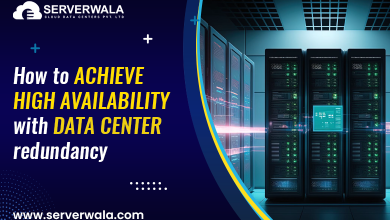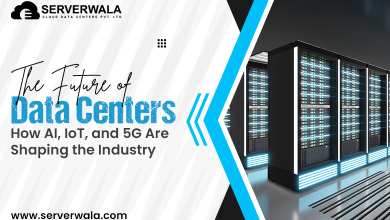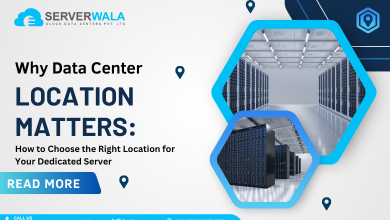Selecting the Right DCIM Solution: Factors to Consider
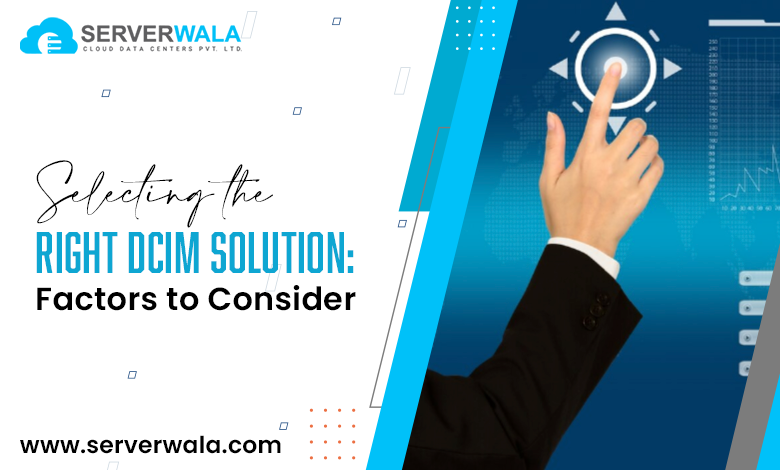
Introduction
Selecting a Data Center Infrastructure Management (DCIM) solution is a decision that can significantly impact the effectiveness as well as dependability of your data center. A carefully chosen solution helps improve operational workflows, enhance resource management, and reduce energy costs. It also enables organizations to better monitor critical assets and make proactive decisions to avoid downtime.
With an extensive range of choices accessible, picking the apt DCIM tool can be challenging. Each solution offers distinct features, and apprehending how they sync with your necessities is the way. Elements like scalability, integration with current systems, and vendor assistance should be carefully analyzed.
This blog provides a detailed guide to help you apprehend the selection methodology. By focusing on essential considerations, you can confidently choose a DCIM solution that supports your existing necessities while picking up future advancement.
Also Read: Cloud-based Data Centre Infrastructure Management (DCIM): An Overview
Overview of DCIM (Data Center Infrastructure Management)

Data Center Infrastructure Management (DCIM) is a strategic framework designed to unify IT and facility operations within a data center. Acting as a centralized management platform, it provides a comprehensive view of all critical systems that drive data center efficiency and reliability. These systems include power usage, cooling mechanisms, equipment health, and physical space utilization. With real-time visibility into these components, DCIM empowers entities to make educated decisions as well as assign resources more optimally.
Modern DCIM solutions extend far beyond basic monitoring. They leverage progressive technologies, for instance, predictive analytics, automation, etc. to transform data center management. Predictive analytics, say, enables operators to think over equipment failures, plan resource allocations, and predict future capacity requirements. Automation eliminates manual intervention in routine tasks, such as managing cooling levels, optimizing workloads, and generating performance reports. These features significantly reduce human error while accelerating response times.
Key advantages of DCIM include:
- Enhanced Energy Efficiency: DCIM tools identify inefficiencies in energy consumption and optimize cooling and power systems, leading to significant cost savings.
- Comprehensive Asset Management: The solution tracks the status, location, and lifecycle of IT equipment, improving resource utilization and reducing waste.
- Downtime Reduction: With real-time alerts and predictive capabilities, potential issues such as hardware failures or overheating are detected early, minimizing disruptions.
- Improved Capacity Planning: By analyzing historical and real-time data, DCIM aids in accurately forecasting future requirements for power, cooling, and space.
- Regulatory Compliance Support: DCIM systems often include reporting features that help meet compliance standards for energy usage, security, and data management.
Moreover, modern DCIM platforms can support multi-location data centers, enabling centralized control over distributed operations. By integrating these capabilities, DCIM tools have become indispensable for achieving operational excellence, reducing costs, and ensuring long-term scalability in today’s data centers.
Understanding the Needs of Your Data Center
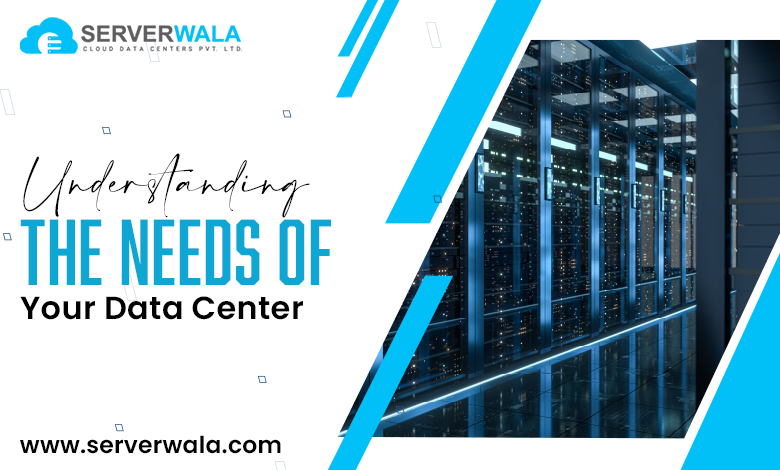
Choosing the right DCIM solution starts with a thorough assessment of your data center’s unique needs. Every facility is different, with varying sizes, objectives, and challenges. Understanding your current operations and anticipating future requirements will help you select a solution that delivers maximum value.
1. Scalability
- Assess whether the DCIM solution can accommodate future growth in your data center.
- Ensure it supports the addition of new racks, servers, and facilities without compromising performance or stability.
- Scalable solutions are essential for organizations planning for rapid expansion or technological upgrades.
2. Integration with Existing Systems
- Evaluate how seamlessly the DCIM tool can align with your existing software & hardware.
- Check for compatibility with systems like Building Management Systems (BMS), IT Service Management (ITSM) tools, or Configuration Management Databases (CMDB).
- Ensure the solution offers APIs or connectors for easier integration, reducing the risk of operational silos.
3. Operational Objectives
- Clearly define your operational goals, whether they focus on reducing downtime, improving energy efficiency, or optimizing capacity planning.
- Identify features that align with your priorities, such as real-time monitoring, advanced analytics, and automated workflows.
- Determine whether the solution supports compliance reporting or capacity optimization for audit purposes.
4. Compliance and Security
- Verify whether the DCIM solution meets regulatory standards like HIPAA, PCI-DSS and more.
- Examine its capacity to secure confidential data and critical infrastructure through robust security features.
- Ensure the vendor’s security protocols align with your organization’s cybersecurity requirements.
5. Budget and ROI
- Calculate the comprehensive pricing of ownership, incorporating execution, training, & administration.
- Evaluate whether the investment justifies returns in terms of energy savings, lessened downtime, and intensified effectiveness.
- Evaluate versatile cost models, like subscription-dependable plans, that fit your budget constraints.
6. User-Friendly Features
- Ensure the DCIM solution provides intuitive dashboards and role-based access for diverse teams.
- Look for customizable reporting and alert systems that accommodate particular functional necessities.
- Test the solution’s interface to ensure it is human-friendly as well as needs least training for adoption.
7. Vendor Support and Scalability
- Assess the vendor’s experience, reputation, and reliability in delivering DCIM solutions.
- Confirm the availability of technical support, training resources, and documentation.
- Ensure the vendor provides regular updates to keep the software aligned with evolving technology trends.
By carefully evaluating these factors, you can choose a DCIM solution that aligns with your unique operational goals, supports long-term scalability, and ensures a more reliable, secure infrastructure. Addressing these considerations will help future-proof your data center operations and maximize the benefits of DCIM technology.
Key Features of a Robust DCIM Solution
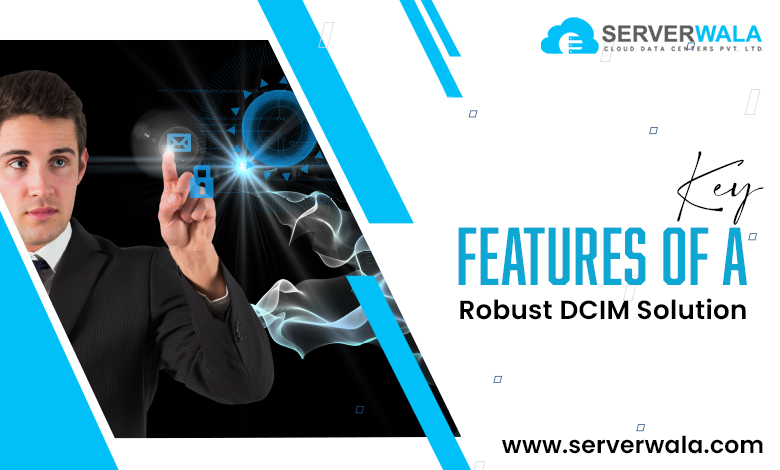
A well-designed DCIM solution is essential for maintaining an efficient and reliable data center. It goes beyond basic management by providing tools that enhance visibility, streamline operations, and optimize resource utilization. The following are the key attributes to seek in a robust DCIM environment:
1. Real-Time Monitoring
- Provides continuous tracking of critical components such as power usage, cooling performance, and IT asset health.
- Allows instant identification of potential issues, helping you address them before they escalate.
- Ensures compliance with energy-efficiency standards by monitoring consumption patterns.
2. Advanced Automation
- Automates routine processes like load balancing, capacity adjustments, and alerting.
- Reduces human intervention, minimizing the risk of errors and increasing operational efficiency.
- Gives your team time to emphasize on strategic tasks rather than repetitive activities.
3. Predictive Analytics
- Uses historical and real-time data to predict equipment failures or resource shortages.
- Enables proactive maintenance, lessening downtime and expanding the lifespan of vital assets.
- Optimizes power and cooling usage by analyzing trends and suggesting improvements.
4. Customizable Dashboards
- Provides user-friendly interfaces tailored to the specific needs of different teams, such as IT, facilities, and management.
- Shows key functioning indicators (KPIs) & metrics in real time for easy decision-making.
- Offers flexible reporting options for compliance, audits, and performance reviews.
5. Scalability and Flexibility
- Supports seamless expansion as your data center grows, whether through additional racks, servers, or facilities.
- Adapts to changing business requirements without giving up functioning.
- Offers modular solutions, allowing you to implement features based on immediate priorities and scale up later.
6. Integration Capabilities
- Connects with existing tools and systems such as ITSM, BMS, and CMDB for unified management.
- Supports APIs and plugins for smooth data exchange across platforms.
- Enhances operational efficiency by eliminating silos between IT and facilities teams.
7. Intelligent Resource Management
- Tracks the utilization of space, power, and cooling resources, helping to eliminate waste.
- Suggests optimized layouts for racks and equipment placement to improve airflow and energy efficiency.
- Assists in capacity planning to avoid overprovisioning or underutilization.
8. Security Features
- Monitors and controls physical access to the data center through integration with security systems.
- Identifies anomalies in system behavior, such as unusual power consumption, that may indicate a security threat.
- Guarantees data integrity as well as privacy via encryption and compliance with security standards.
9. Cost Management Tools
- Tracks operational costs, including energy usage and maintenance expenses, providing detailed insights for budgeting.
- Recognizes areas where expenses can be eliminated without impacting performance.
- Justifies ROI by highlighting savings achieved through efficient resource management and automation.
10. Environmental Monitoring
- Monitors temperature, humidity, and airflow to sustain efficient environment conditions.
- Prevents equipment damage caused by overheating or excessive moisture.
- Ensures compliance with sustainability goals by tracking carbon footprints.
Evaluating Vendor Offerings
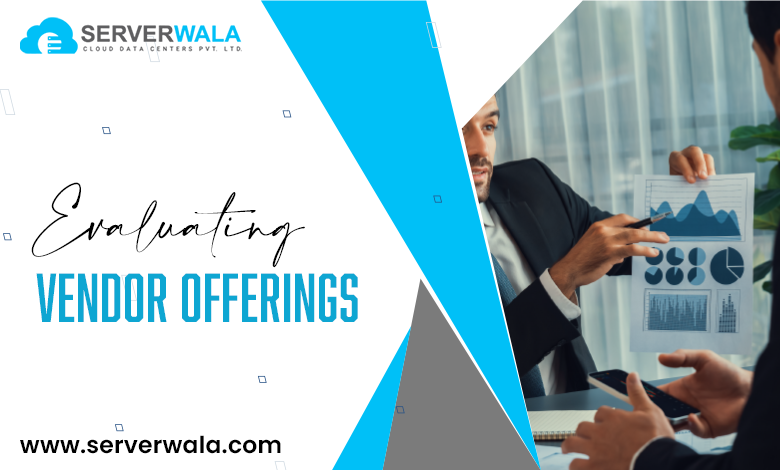
Opting for the apt DCIM vendor is as significant as choosing the solution itself. Not all sellers render the same sort of expertise, services, and flexibility. A thorough evaluation can ensure you partner with a vendor capable of meeting your current and future needs. Consider the following factors:
1. Industry Experience and Reputation
- Assess the vendor’s history in the DCIM market. Vendors with extensive experience are more likely to render stable as well as dependable solutions.
- Look for success stories that show their capacity to actualize measurable outcomes.
- Verify client feedback, testimonials, and industry identification to validate their credibility.
2. Technical Support and Services
- Ensure the vendor offers 24/7 technical support to address critical issues promptly.
- Check if they render several mediums for assistance, like live chat, phone, and more.
- Evaluate the quality of their service level agreements (SLAs), incorporating assured response as well as resolution times.
- Ask if they offer ongoing maintenance services and routine updates to have the system optimized as well as safe.
3. Customization and Flexibility
- Determine if the solution can be customized to sync with your particular operational necessities.
- Look for flexibility in features, reporting, and integrations to guarantee the solution adapts to your progressing necessities.
- Ask whether the vendor can accommodate future upgrades without the need for exhaustive reconfiguration or further cost investment.
4. Cost Transparency and ROI
- Assess the pricing map, incorporating licensing prices, subscription packages, and any hidden costs.
- Ensure the solution provides a clear return on investment (ROI) through measurable benefits like reduced downtime, energy savings, and enhanced efficiency.
- Request a cost-benefit analysis from the vendor to understand how the solution impacts your long-term operational costs.
5. Solution Testing: Demos and Trials
- Ask a live demo to check the environment in action. Look deeply to user interfaces, ease of usage, and the features most relevant to your needs.
- Insist on a trial period to test the solution in your environment. Assess how well it integrates with your current systems as well as workflows.
- During the trial, involve cross-functional teams to gather feedback on usability and functionality.
6. Training and Onboarding
- Confirm if the vendor provides comprehensive training for your team to assure a hassle-free transition.
- Ask if they offer onboarding sessions to assist with initial setup and configuration.
- Evaluate whether the vendor provides user manuals, video tutorials, or knowledge bases for ongoing support.
7. Scalability and Long-Term Partnership
- Check if the vendor’s roadmap aligns with your future plans. Are they innovating to carry on with industry trends?
- Assess whether the vendor has the capacity to scale their solution alongside your business growth.
- Look for a vendor that prioritizes long-term collaboration rather than just offering a one-time sale.
8. Compliance and Security Standards
- Confirm that the vendor’s solution aligns with industry laws.
- Ask about their data security measures, including encryption, user accessibility controls, & routine audits.
9. Post-Implementation Support
- Evaluate their commitment to post-implementation services, including fine-tuning, periodic health checks, and performance reviews.
- Ensure they provide upgrades and patches to keep the system upgraded and secure against emerging vulnerabilities.
10. References and Community Engagement
- Request references from existing clients to apprehend their experience with the vendor.
- Check if the vendor fosters a user community where customers are able to prompt insights, apt practices, and troubleshooting tips.
Implementation and Integration
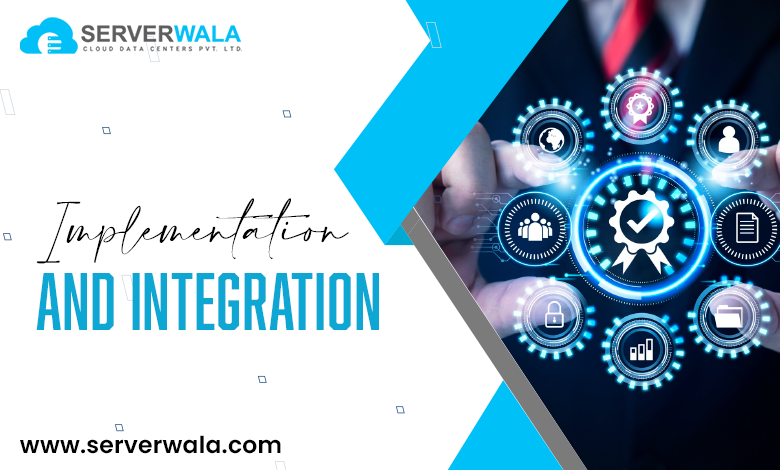
Implementing and integrating a DCIM solution is a critical phase that requires detailed planning, collaboration, and strategic execution. A well-executed deployment ensures your organization maximizes the benefits of the solution while minimizing operational risks. Below are essential steps and considerations for successful DCIM implementation:
1. Define the Project Scope
- Start by recognizing the particular goals you desire to acquire with the DCIM solution.
- Clearly outline desired outcomes, such as improved energy efficiency, better capacity management, or enhanced asset tracking.
- Settle key performance indicators (KPIs) to apprehend success, such as reduced downtime or faster incident resolution.
2. Construct a Cross-Functional Team
- Form a team that consists IT professionals, facility managers, and main stakeholders. Each group brings unique insights into operational needs.
- Assign a project manager to oversee the execution methodology and ensure alignment across departments.
- Include end-users in planning to accumulate reviews on usability as well as functionality.
3. Conduct a Pre-Implementation Audit
- Assess your current infrastructure to identify gaps and potential challenges.
- Review existing tools and systems to determine compatibility with the DCIM solution.
- Evaluate network capacity and server configurations to ensure the infrastructure can handle the new system.
4. Plan for Seamless Integration
- Map out how the DCIM tool will interact with your existing systems, including BMS (Building Management Systems), ITSM (IT Service Management), and CMDB (Configuration Management Database).
- Test integration workflows to ensure data flows hassle-free between systems without errors.
- Address potential conflicts, such as software version mismatches or hardware incompatibility, before deployment.
5. Opt for a Phased Rollout
- Avoid implementing the DCIM solution across the entire data center at once. Instead, roll it out in stages.
- Begin with a pilot project in a smaller environment to identify issues and gather feedback.
- Employ insights from the pilot phase to redraw the deployment plan for broader execution.
6. Prioritize Data Migration and Accuracy
- Ensure accurate migration of existing data into the new DCIM system. Inconsistent or outdated data can lead to errors.
- Validate and clean up asset information, power usage details, and other critical data before importing.
- Conduct post-migration tests to confirm data integrity.
7. Train Staff Thoroughly
- Render hands-on training for all related staff, including IT teams, facility managers, and end-users.
- Offer role-specific training sessions to ensure every team member apprehends how to employ the system effectively.
- Build user manuals, video guides, and more to assist ongoing learning.
8. Establish a Monitoring and Feedback Mechanism
- Continuously monitor the performance of the DCIM solution after deployment.
- Collect reviews from users to recognize areas for enhancement or further training necessities.
- Set up regular review sessions to discuss system functioning and alignment with project objectives.
9. Minimize Disruptions During Implementation
- Schedule deployment activities in the periods of low activity to lessen impact on operations.
- Create a fallback plan to revert to previous systems in the situation of unexpected disruptions.
- Communicate clearly with all teams about potential downtime or process changes during the rollout.
10. Ensure Long-Term System Maintenance
- Work with the vendor to set up a maintenance schedule for software updates, patches, and performance optimizations.
- Regularly review system performance metrics to identify inefficiencies or areas for improvement.
- Plan for future upgrades to ensure the system progresses with your business necessities.
11. Measure Post-Implementation Success
- Use the pre-defined KPIs to evaluate the effectiveness of the DCIM solution.
- Assess improvements in energy usage, asset utilization, and incident resolution times.
- Share outcomes with stakeholders to show the value of the solution and secure assistance for future initiatives.
Conclusion
Choosing a DCIM solution requires careful planning and a clear understanding of your data center’s goals. It is significant to assess solutions as per their capacity to render real-time monitoring, analytics, and automation. Scalability and integration capabilities should also be prioritized to ensure the solution evolves with your infrastructure.
The benefits of a well-implemented DCIM tool go beyond basic monitoring. It enables efficient energy management, improves asset utilization, and minimizes the risk of downtime. By enhancing visibility and control, it allows you to address inefficiencies and optimize performance consistently.
Thorough research and careful vendor evaluation are critical steps in this process. By selecting the right solution, you establish a strong foundation for a data center that is efficient, cost-effective, and ready to meet the challenges of an evolving digital landscape.

